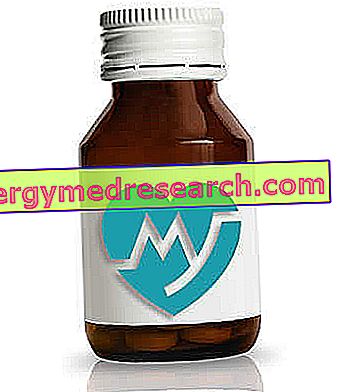What is gastric lavage?
"Gastric lavage" and "gastrolus" are two terms extracted from medical language to indicate a forced process of emptying the stomach from its contents: we are talking about a therapeutic method to be performed purely in an emergency, very different from "physiological" vomiting or self-induced.
Purpose of the intervention
The goal for which gastric lavage is performed is easily understood: to extract the generally toxic, or extremely dangerous, content from the stomach.
However, gastric lavage is not performed for the sole purpose of eliminating toxic substances: in fact, some surgical operations require the complete emptying of the stomach before subjecting the patient to the operation.
It is necessary to point out that gastric lavage must be carried out within a short time from the ingestion of the harmful or toxic substance, in order to avoid its absorption (generally 1-2 hours): if the substance exceeds the limit of the pyloric sphincter, the its absorption cannot be avoided by gastric lavage.
Effectiveness
There are diverging opinions about the efficacy of gastric lavage performed after an hour from the ingestion of food / harmful substance: more precisely, the term "efficacy" - in this specific case - refers to the validity of the gastrolusis in decontaminating the intestinal tract. It is believed, in fact, that after this time the intestine has already absorbed part of the dangerous substance. [taken from general and clinical pharmacology, by BG Katzung]
How to do it
First of all, before subjecting the patient to gastric lavage it is good to draw up a medical history of the subject, in order to evaluate indications and contraindications of the procedure; furthermore, it is important to protect the airways accurately if the patient is in a state of unconsciousness.
When the subject is forced to endotracheal intubation, gastric lavage can be performed using a nasogastic or oro-gastric tube.
The gastric lavage is not a practice of elevated executive difficulties: the patient - conscious state - must be positioned, on a generally inclined bed, in left lateral decubitus, so that the probe can be facilitated to collect the gastric contents piled up in proximity of the great curvature of the stomach: furthermore, during the execution of the practice, the lateral position of the patient reduces the possibility that the lavender liquid passes into the intestine through the pylorus. If the patient is intubated, he must be placed in a supine position.
The probes are made of a transparent material, with some large lateral orifices towards the end; the length is generally 1.2 meters and the diameter, which varies according to the gastric contents, can sometimes be larger than a centimeter. Clearly, if toxic liquids are swallowed, the probe can also have a thinner diameter.
After the introduction of the probe into the gastric sac, we proceed with the aspiration of what is present in the stomach: this procedure must continue until the stomach is completely empty.
Finally, stomach washing: 0.2 liters of liquid in the adult and 0.1 liters in the child (up to the age of 10) are introduced and removed. The liquid under examination can be water (less frequently) or physiological solution heated to body temperature to prevent hypothermia: when necessary, specific antidotes can be added to the liquid.
The gastric lavage must continue until the moment in which a clear, clear liquid, free of solid material, comes out of the probe: at this point, proceed with a further washing (1-10 liters).
Finally, to avoid a possible suction of the liquid, the probe must be closed or carefully clamped before being removed.
At the end of gastric lavage, the patient must ingest activated charcoal. [taken from " Guidelines in clinical toxicology", Pavia Poison Center "]
Alternatives to gastric lavage
Admirably less invasive than gastric lavage (and, according to the opinion of some toxicologists, even more effective than the method of forced gastric emptying) is the administration of activated charcoal, capable of ensuring an excellent adsorption of toxic substances and drugs. Activated carbon should not be used in case of poisoning with corrosive or alkaline acid minerals, nor is it able to bind lithium, iron and potassium. However, it has recently been observed that activated carbon exerts an even greater efficacy than gastric lavage.
Even the administration of substances with a highly purgative action could help eliminate the toxic substance from the gastrointestinal tract, thereby reducing its absorption.
[taken from general and clinical pharmacology, by BG Katzung]
Contraindications
Gastric lavage cannot be practiced in some specific cases: absolutely banned in case of poisoning by corrosive agents or caustic substances (eg derived from oil) and surfactants (responsible for the production of abnormal amounts of foam). If the patient is suffering from epilepsy or has lost consciousness, gastric lavage can only be performed using precise precautions.
Summary
Gastric lavage: to fix the concepts
| Gastric lavage: synonym | Gastrilusi |
| Gastric lavage: definition | Forced process of gastric emptying from its contents: Therapeutic method to be performed purely in an emergency, very different from "physiological" vomiting |
| Gastric lavage: medical goal |
|
| Gastric lavage: timing | Gastric lavage must be performed within a short time after ingestion of the harmful or toxic substance → avoid the absorption of the substance |
| Gastric lavage: method of execution |
|
| Alternatives to gastric lavage |
|
| Gastric lavage: contraindications | Gastric lavage is banned in case of poisoning by corrosive agents or caustic substances and surfactants; if the patient is epileptic or has lost consciousness → take precise precautions |



